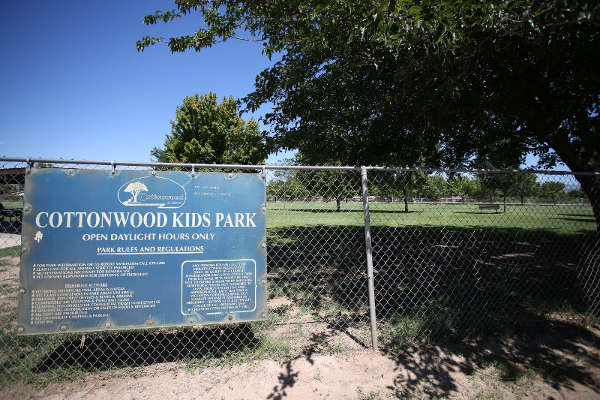
Taxpayers who assumed the city of Cottonwood lapsed in its duty by not drilling an exploratory well for wastewater injection prior to the construction of the Riverfront Wastewater Reclamation facility may want to reconsider their stances, natural resources director Tom Whitmer said.
“Realistically, they shouldn’t be upset. Disappointed? Yes. But not upset.”
Citing the preponderance of “misinformation flowing out there,” Whitmer said the city had not simply assumed an injection well at Riverfront would work. Instead, following the advice of numerous independent water resource experts who advised the city for nearly a decade, the city made an educated guess that an injection well capable of pumping 200 gallons per minute into the aquifer would work at Riverfront.
“You mostly assume you can inject from where you can pump from,” Whitmer said, adding that initial tests a couple years ago for this injection capacity turned out positive.
Only this year did the city discover that these early tests were misleading.
“It looked fairly positive [but] the problem you have is you have this stratified aquifer system,” he said. “There’s a separating layer of clay that doesn’t allow a lot of communication between the upper and lower aquifer …. You’re at the mercy of the geology. It’s a tremendously dynamic system [and] because of that it’s hard to know with great accuracy what’s down there until we drill it.”
The last drill determined that in order to process 200 gallons per minute, seven to 10 injection wells would have to be drilled at Riverfront.
“That just didn’t make a whole lot of sense,” Whitmer said, adding that the option to increase the pressure of injection was rejected due to unknown factors: Though technically feasible, past a certain point of injecting under pressure the city might run the risk of “frakking the aquifer [and] we don’t know what would happen with that.”
Whitmer said assuming the city should have done an exploratory well sooner makes sense.
“It’s one of those things that should’ve been done in the early parts. I wasn’t around then so I can’t tell you why it wasn’t done,” he said, though he also said he does not believe it would have made much of a difference.
“At the end of the day they’d already agreed on the plant going down there [at Riverfront],” Whitmer said. “Whether we drilled [the well] or didn’t, it’s the same situation. We’d already decided on the location.”
According to Whitmer, the city did not choose the Riverfront location primarily because of its potential to feature an injection well.
From the beginning, irrigating Riverfront’s park facilities with treated wastewater was the primary function of the plant. City Council planned to pump whatever was left over after irrigation into the Verde River — a plan not endorsed by the Arizona Department of Environmental Quality and thus scrapped.
“There’s always this concern it will have an impact on wildlife,” Whitmer said.
Regardless of the challenges now presented by an inoperable injection method at Riverfront, Whitmer said he believes the city has potentially found a solution — one that is more elegant and sustainable than an injection well at Riverfront. Looking for a location that might house an injection well and have irrigable ground, Whitmer and the city focused in on Cottonwood Kids Park, adjacent to Verde Valley Fairgrounds.
“We still want to inject water because that’s good for the entire region,” Whitmer said, adding that irrigating Kids Park, which is currently on groundwater, would also positively impact the environment. “Let’s pick a place where we can get a bigger bang out of it …. We can irrigate that park as well as some areas around the fairgrounds. It actually kills two birds with one stone.”
According to Whitmer, the treated wastewater might even be used by Minerals Research, which is engaged in the heavily groundwater-demanding process of processing slag for industrial purposes.
Whitmer said pumping the water to Kids Park will not be an issue: The Riverfront facility already has the pumps in place. Buying pipe and laying it in the ground, however, will be a major cost, one the city is in the process of determining.
Following the procurement of three bids for “the drilling, geophysical logging, development of a deep boring and injection testing,” Camp Verde-based KP Ventures Well Drilling and Pump Company will likely be the contractors handling the test well at Kids Park. Their bid came in at approximately $120,000.
Should the injection well not work out at Kids Park, Whitmer added, the city has one other option on the table: Discharging the treated wastewater at Riverfront into Cottonwood Ditch.
Whitmer said that this is a workable solution, but that the city would probably view it as a temporary solution. Furthermore, ADEQ might not endorse this option, leaving the city to either forge ahead despite that department’s non-endorsement or come up with yet another option.
“Right now, we’ve got a site that looks fairly good on paper,” Whitmer said, adding that he hopes City Council will approve the contract with KP Ventures during its Tuesday, Aug. 15, meeting, after press time, and expedite the whole process. “If we can do it at Kids Park, it probably actually works out better.”